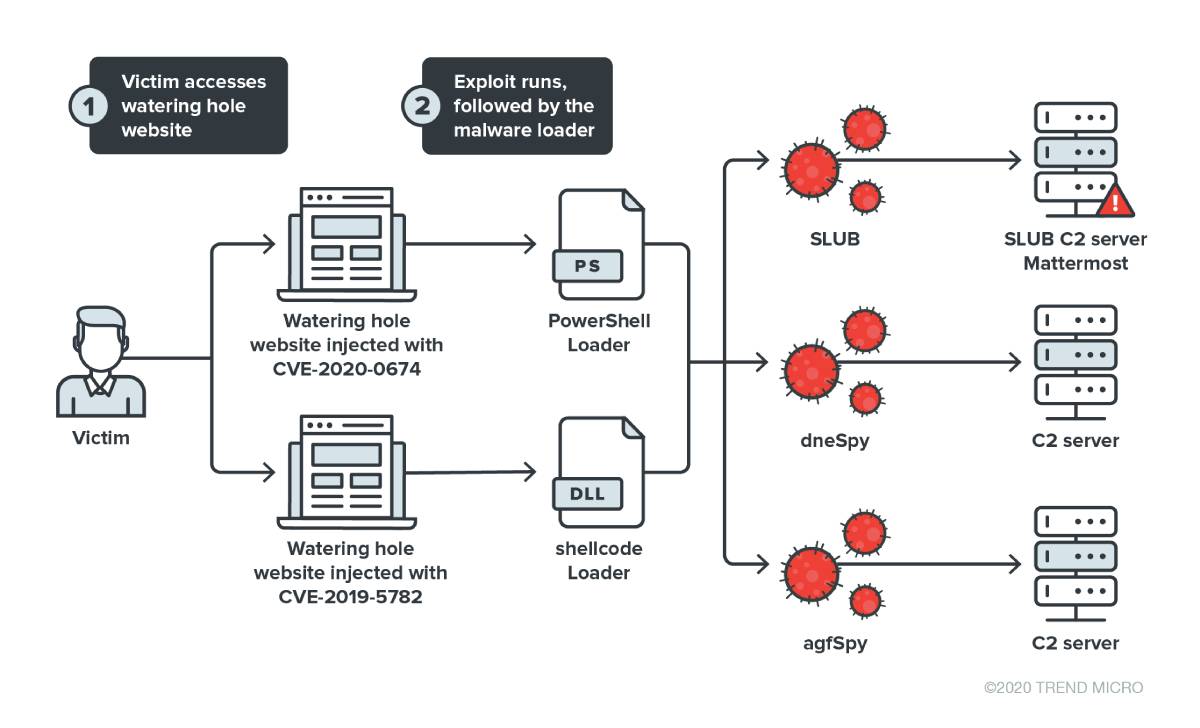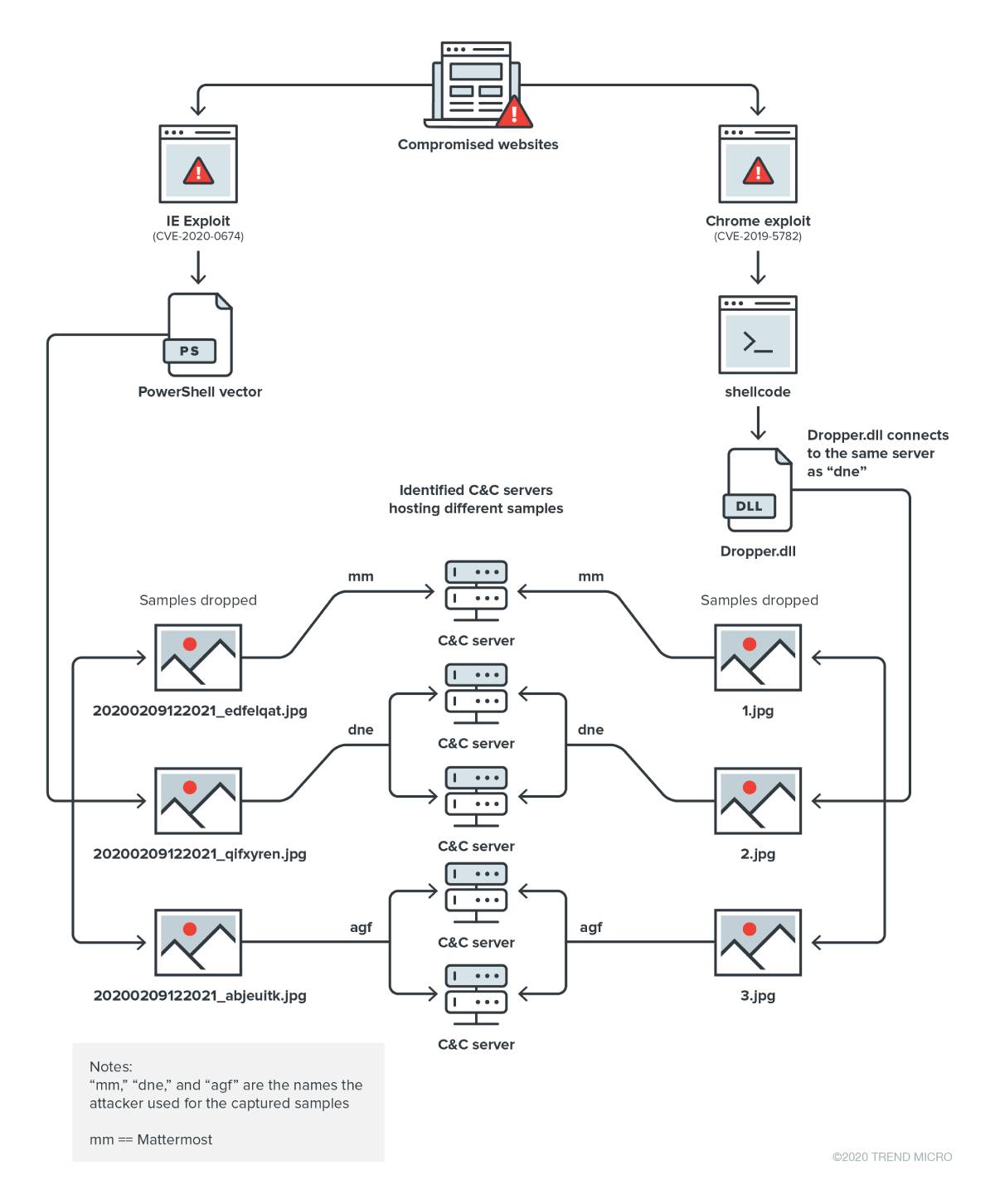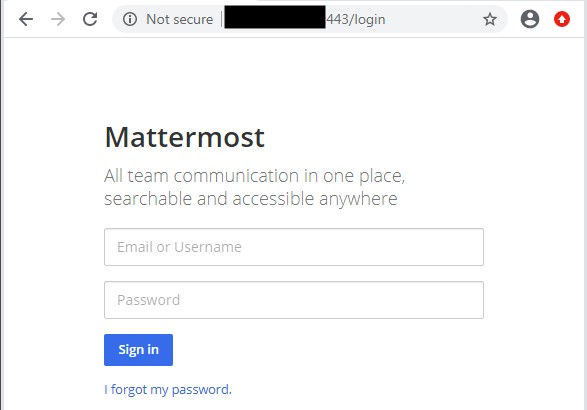![]() Download Operation Earth Kitsune: Tracking SLUB’s Current Operations
Download Operation Earth Kitsune: Tracking SLUB’s Current Operations
We have already published findings on the SLUB malware’s past campaigns. In our latest research paper, we uncovered a recent watering hole campaign that involves a new variant of the malware. The threat, which we dubbed as such due to its abuse of Slack and GitHub in previous versions, has not abused either of the platforms this time; instead, it employed Mattermost, an open-source online chat service that can be easily deployed on-premise.
In an official statement regarding the issue, Mattermost denounced illicit and unethical use of their platform, as this is a definite violation of their Conditions of Use policy. They also shared how users can report illicit use of the software.
We found Operation Earth Kitsune using a total of five C&C servers, seven samples, and four new bugs, aiming to compromise websites to host malware. We initiated our investigation after noticing that the Korean American National Coordinating Council (KANCC) website was redirecting visitors to the Hanseattle website. Users who accessed the said site were redirected to a weaponized version of a proof of concept (POC) for the CVE-2019-5782 Google Chrome vulnerability published in the chromium tracking system. Digging deeper, we discovered that the attack does not only involve a weaponized version of the mentioned Chrome exploit; the exploit was infecting the victim machine with three separate malware samples.
Figure 1. The campaign's infection chain
CVE-2020-0674, a vulnerability in Internet Explorer, was also used to compromise websites. While a shellcode was used for the Chrome exploit, a PowerShell loader was used in the Internet Explorer exploit. Both the samples delivered by the shellcode and PowerShell script connect to the same C&C servers.
Besides the aforementioned behavior, the campaign was also seen exploiting other vulnerabilities, such as CVE-2016-0189¸ CVE-2019-1458, and the vulnerabilities cited in our previous reports on SLUB.
Like the aforementioned affected sites, the compromised servers are using the GNUBoard Content Management System (CMS), some of them on either version 4 or version 5.
Besides SLUB, two new malware variants, which we dubbed dneSpy and agfSpy, are also linked to this campaign. While SLUB's objective in this campaign is to exfiltrate system information, the two other malware variants were deployed to gain additional control of the affected user’s machine. We believe that the operators of SLUB also released these malware variants. We are currently investigating these samples and will share any pertinent findings.
Figure 2. The attack vectors used in the campaign
The Chrome Attack Vector
For the Chrome attack vector, the exploit used CVE-2019-5782 and another vulnerability that does not have an assigned CVE. To deploy a weaponized version of this, the attacker reused a POC code. It also implemented two customizations: the separation of the shellcode to load in from the Javascript encoded version, and the inclusion of support for other operating system versions.
The shellcode requests the dropper.dll from the network; after deobfuscation, it loads the DLL payload address space of the running process.
Dropper.dll checks the system for installed antimalware products by comparing the current processes to a predefined list. If none are detected, the dropper will start downloading three samples, namely “1.jpg,” “2.jpg,” and “3.jpg.”
The Internet Explorer attack vector
For the infection vector that uses the Internet Explorer exploit CVE-2020-0674, the exploit runs a shellcode, which executes a few stages of a PowerShell loader.
Similar to the shellcode used in the Chrome exploit chain, the PowerShell version checks if the affected system has any antimalware product installed. If none are installed, the PowerShell proceeds to download and execute three backdoors. If instructed in the LPE (Local Privilege Escalation) column, the PowerShell loader may also initiate the download and execution of an LPE binary exploiting CVE-2019-1458.
SLUB's Use of Mattermost
The SLUB variant used in this campaign employs Mattermost to keep track of its deployment by creating a channel for each infected machine. All communication uses HTTP in port 443.
Figure 3. Mattermost server operating on port 443.
The malware’s communication with Mattermost requires an authentication token that can grant permissions for certain functions such as creating channels and sending posts to these channels.
To learn more about the attacker’s infrastructure, we reviewed Mattermost’s API. Eventually, we were able to collect the following information:
- The list of channels.
- The dump of all posts in each channel.
- The dump of all screenshots in each channel.
- The list of all users associated with the channels.
The actual list of users showed that the server was first set up on March 10, 2020. It also gave us an insight into the roles each user plays and the kind of permissions they have; “system_admin” for the admin user, and “system_user_access_token” and “system_post_all_public” for regular users.
Figure 4. Mattermost server users’ accounts
At the time of research, we found 15 users that are classified as follows:
| User type | Count |
| Bot user | 1 |
| Regular user | 13 |
| Admin user | 1 |
Table 1. Type and number of users created in the Mattermost server
We have reached out to Mattermost regarding the abuse of the platform. Here is their official statement: “Mattermost’s open-source, self-managed collaboration platform is broadly used and co-created by developers and ethical security researchers. As a community, we denounce illicit and unethical use, which is explicitly against Mattermost’s Conditions of Use policy. We are grateful to our friends at Trend Micro for their contributions on this issue. For more information on how to help, see: How do I report illicit use of Mattermost software?”
For more information and in-depth analysis of the SLUB malware’s recent campaign, read our research paper, “Operation Earth Kitsune: Tracking SLUB’s Current Operations”, which aims to shed light on SLUB's recent activities by analyzing the behavior of this quickly evolving malware.
Like it? Add this infographic to your site:
1. Click on the box below. 2. Press Ctrl+A to select all. 3. Press Ctrl+C to copy. 4. Paste the code into your page (Ctrl+V).
Image will appear the same size as you see above.
Recent Posts
- Estimating Future Risk Outbreaks at Scale in Real-World Deployments
- The Next Phase of Cybercrime: Agentic AI and the Shift to Autonomous Criminal Operations
- Reimagining Fraud Operations: The Rise of AI-Powered Scam Assembly Lines
- The Devil Reviews Xanthorox: A Criminal-Focused Analysis of the Latest Malicious LLM Offering
- AI Security Starts Here: The Essentials for Every Organization





 Complexity and Visibility Gaps in Power Automate
Complexity and Visibility Gaps in Power Automate AI Security Starts Here: The Essentials for Every Organization
AI Security Starts Here: The Essentials for Every Organization The AI-fication of Cyberthreats: Trend Micro Security Predictions for 2026
The AI-fication of Cyberthreats: Trend Micro Security Predictions for 2026 Stay Ahead of AI Threats: Secure LLM Applications With Trend Vision One
Stay Ahead of AI Threats: Secure LLM Applications With Trend Vision One